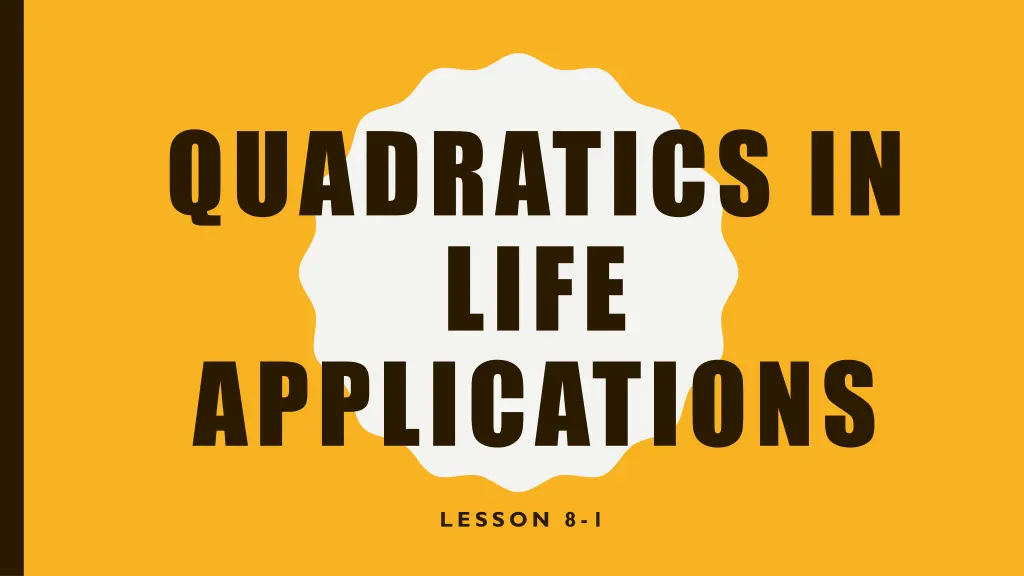
Understanding Quadratic Equations in Real Life Applications
Learn about quadratic equations and their applications in real life scenarios. Discover the standard form, graph properties, axis of symmetry, intercepts, and more in this comprehensive lesson. Visual aids included for better understanding.
Uploaded on | 0 Views
Download Presentation

Please find below an Image/Link to download the presentation.
The content on the website is provided AS IS for your information and personal use only. It may not be sold, licensed, or shared on other websites without obtaining consent from the author. If you encounter any issues during the download, it is possible that the publisher has removed the file from their server.
You are allowed to download the files provided on this website for personal or commercial use, subject to the condition that they are used lawfully. All files are the property of their respective owners.
The content on the website is provided AS IS for your information and personal use only. It may not be sold, licensed, or shared on other websites without obtaining consent from the author.
E N D
Presentation Transcript
QUADRATICS IN LIFE APPLICATIONS LESSON 8 -1
FORM A Quadratic Equation is an equation with No variable raised to a power greater than 2. Standard Form: y = ax + bx + c, where a 0 . Its also named the sum-product form.
GRAPH A U-shaped graph called a parabola. -If the leading coefficient a of the equation is positive, the parabola opens up. -If the leading coefficient a is negative, the parabola opens down.
PROPERTIES Vertex is the lowest point of a parabola that opens up (minimum) or the highest point of a parabola that opens down (maximum)
PROPERTIES Axis of symmetry which is the vertical line passing through the vertex that divides the parabola into two symmetric parts. We can use the following formula to find the axis of symmetry ? = ? 2?
PROPERTIES Intercepts: x-intercepts are called the roots, solutions and zeros. The parabola crosses the x axis at the x intercepts. A quadratic equation can have 0, 1, or 2 zeros. Y-intercept or c is where the parabola crosses the y axis.






















